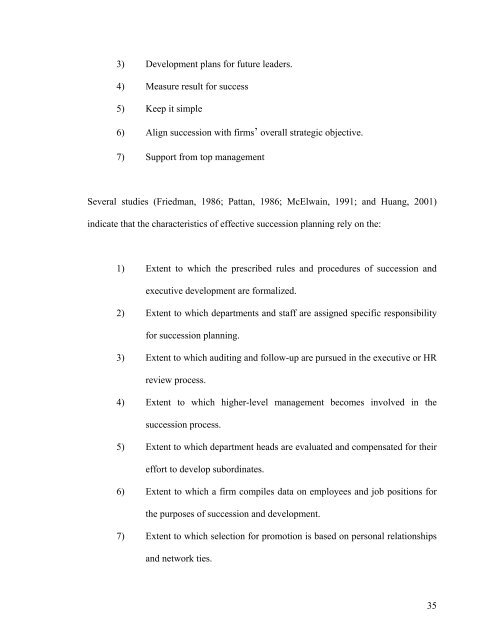CHAPTER 1: INTRODUCTION 1.0 Chapter Overview - DSpace@UM
CHAPTER 1: INTRODUCTION 1.0 Chapter Overview - DSpace@UM
CHAPTER 1: INTRODUCTION 1.0 Chapter Overview - DSpace@UM
Create successful ePaper yourself
Turn your PDF publications into a flip-book with our unique Google optimized e-Paper software.
3) Development plans for future leaders.4) Measure result for success5) Keep it simple6) Align succession with firms’ overall strategic objective.7) Support from top managementSeveral studies (Friedman, 1986; Pattan, 1986; McElwain, 1991; and Huang, 2001)indicate that the characteristics of effective succession planning rely on the:1) Extent to which the prescribed rules and procedures of succession andexecutive development are formalized.2) Extent to which departments and staff are assigned specific responsibilityfor succession planning.3) Extent to which auditing and follow-up are pursued in the executive or HRreview process.4) Extent to which higher-level management becomes involved in thesuccession process.5) Extent to which department heads are evaluated and compensated for theireffort to develop subordinates.6) Extent to which a firm compiles data on employees and job positions forthe purposes of succession and development.7) Extent to which selection for promotion is based on personal relationshipsand network ties.35
















